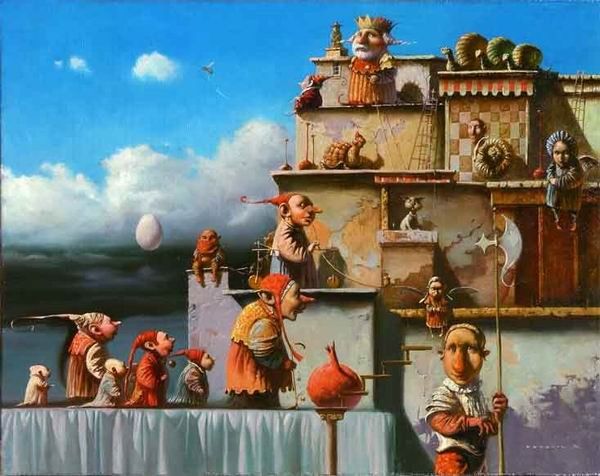
PRINCIPIA SCACCHORUM, Part 15, Square One Problem Diagnosis
REVOLUTIONARY MIND SHIFT FROM MOVES TO PIECES RELATIONS
The ground zero of my years-long study on Chess Square One occurred in April of 2009 when I saw this game, 1.e4 d5 2.Bd3 Bg4 3.exd5 Bxd1 etc., between two boys, who had already been in the game for several months. I had seen many games of the kind, but for some reason I felt utterly shocked and intrigued on that occasion like never before. Ever since then I have researched into possible reasons for the existence of such extreme chess blindness.
I started digging in all places, books and online, for possible cues. The first breakthrough came when I ran across the Nimzovich's article mentioned last time, stating that the traditional Square One was "fundamentally wrong. "To tell the truth, I didn't get the point at the time at all! Nimzovich didn't clearly explain what might have been be wrong with Square One.
"The beginning of knowledge is the discovery of something we don't understand," Frank Hubert
Interestingly, no discussion has ever been initiated within the chess community; the article had never been published in English, as far as I am aware of, until the appearance of GM Ray Keene's Nimzovich: The Reappraisal, in 1974. In addition, the most important part concerning the Square One practices was omitted from the book (my English translation in full was offered in the Chess Journalist of America, Vol XL, No4 in Fall 2011).
Just from reading the First Lesson it's not going to be clear what kind of problem Nimzo was suggesting that we fix.

But it looks that, being an outsider, gives you one small hidden advantage over a Master sometimes:
"Out on the edge you see all kind of things you can't see from the center. Big undreamed-of things -- the people on the edge see them first." Kurt Vonnegut
Studying cognitive science, complex/emergent systems theory, relational theory, psychology, and learning theory over few years, helped lead me to the conclusion, when Nimzo was talking "the rook is ATTACKING the pawn" during the First Lesson, he was actually talking RELATIONS!! The meaning of just one word put everything in the proper perspective! (see Part 11 on how existence, nature, and meaning of things can only be understood in terms of how they relate).
After years of research the main suspect for the Square One disease was finally exposed.
It was deficiency in the most vital brain chemical for developing proper mindset, namely -- seeing piece relationships. It is lack of this key ingredient that leads to serious chess conditions like chess miopia, severe vision loss, or even total blindness in extreme cases.
The diagnosis finally established, we now know what direction to take in order to fix the broken Square One and its corrupt practices focusing on individual moves that Nimzovich so vehemently objected to!
Nimzovich's dissent should have served as a warning to the chess community. Yet, all chess thinkers, teachers, coaches and instructors have never become aware of the snafu Square One is in.
That is exactly why snafu is called snafu!
art Samuel BAK, Sheltering Myths (1998)
